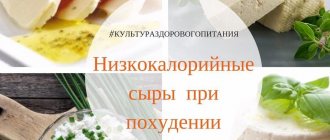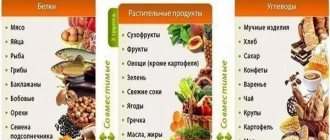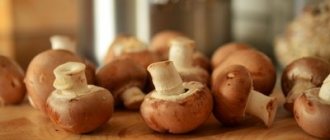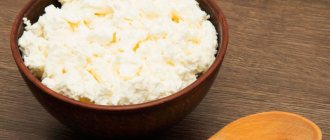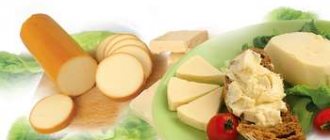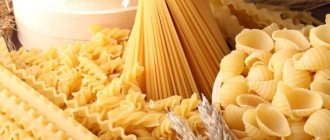Cheese is a fatty product... or is it not?
As a rule, there are cheeses with 60, 50, 45 and 25% fat content. Most often we see two numbers on store shelves: 60% and 50%. And it seems to us that these are just crazy numbers, because you don’t want to eat extra fat! And for those who are on a diet, such fats seem sky-high. However, do not rush to conclusions. Manufacturers indicate the percentage of fat in dry matter, and in the finished product this fat content is reduced to 20-30%. And if you try and find cheese in which the percentage of fat in dry matter is 25%, then this is an extremely dietary product. But there are pitfalls here too!
Calorie content of low-fat cheeses
Calorie content does not depend directly on the percentage of fat. Relatively full-fat cheese may contain fewer calories than low-fat cheese.
Calorie table for low-fat varieties
| Variety | Kcal per 100 g |
| Tofu | 80-100 |
| Cottage cheese | 80-98 |
| Fitness 25% | 202 |
| Oltermanni 17% | 270 |
| Feta Favita | 176 |
| President light | 185 |
| Adyghe light 12% | 143 |
| Light cheese 10% | 72 |
| Gaudette 15% | 207 |
| Mozzarella 30% | 154 |
| Kaserei Champignon 25% | 303 |
| Valio Polar 5% | 180 |
| Valio crumbly curd 2% | 80 |
| Chechil spaghetti with dill | 247 |
| Arla Apetina Feta Light | 160 |
| Arla Apetina Light | 160 |
| Galbani Mazzarella Light | 196 |
Do full-fat dairy products contain more calcium, or do they not?
If you are told that full-fat dairy products are healthier because they contain more calcium, this is not entirely true. Calcium and fat are not interrelated; it even happens the other way around; manufacturers reduce the fat content of dairy products, but artificially enrich them with calcium. But don't fall for this trick!
The thing is that calcium is absorbed together with vitamin D. And this same vitamin D is absorbed with fats. Therefore, cheese (a product containing fat) brings so much calcium to our body, and at the same time vitamins A, E, D, B1, B12, essential amino acids and minerals!
Lowest calorie cheese
Soy Tofu has the least calories - no more than 4% fat. This is a product recommended for diet. You can eat it on its own, add it to different dishes, or put it on a sandwich.
However, those who are accustomed to traditional cheeses may not like it, as it has an inexpressive, lightly salted taste. Because of this, it is an excellent base for all kinds of additives. Manufacturers add seasonings, nuts, and peppers to cheese, resulting in an increase in calorie content.
Tofu not only helps you lose weight, it has a beneficial effect on the body due to the content of high-quality vegetable protein, Fe, Ca. Cheese fulfills the body's need for essential amino acids and contains no cholesterol.
Types of cheeses
Cheeses are divided into the following types (fat, protein and kcal are indicated per 100g):
Hard cheeses : Parmesan and its types, Swiss, cheddar, Maasdam, Emmental, Gruyere, etc. (fat - 28-35 g; proteins - 23-33; kcal: 340-420)
Semi-hard cheeses : Russian, Lithuanian, creamy, Dutch, Gouda, etc. (fat - 22-30 g; proteins -22-28; kcal - 330-350)
Brine cheeses : suluguni, feta cheese, feta, Adyghe, mozzarella, etc. (fat -18-25; proteins - 17-25; kcal: 215-300)
Soft cheeses : all blue cheeses: Camembert, Brie, Gorgonzola, Roquefort, etc. (fat – 30; proteins – 20; kcal – 350-400)
Processed cheeses : Processed cheeses are made from milk, butter, cottage cheese and any other ingredients. As a rule, these are quite high-calorie cheeses. Their main danger is that in addition to proteins and fat, they often also contain carbohydrates (sweet cheeses, or with various additives). That is why processed cheeses are not recommended for people who are overweight. Processed cheese is bad for your figure.
Based on all that has been said, we can conclude that the fattier the cheese, the richer it is in proteins. Hard cheeses are leaders in protein, fat and vitamin content!
Author of the article: Alexandra Petrovicheva (psychologist-nutritionist). I help people gain weight, teach them how to eat healthy, how to get rid of addiction to sweets, overeating and psychological dependence on food.
List of low-fat cheeses
In any case, cheese contains a percentage of fat.
According to its percentage content, all varieties are classified into:
- low fat – contain less than 15%;
- lungs – from 15 to 40%;
- normal – from 40 to 60%.
Percentage of fat in lean varieties
Be sure to read: Mozzarella cheese: fat content, composition, benefits and harm, number of calories per 100 grams
| Variety name | Fat content, % |
| Tofu | 2-4 |
| Lithuanian cottage cheese | 5 |
| Ricotta | 9 |
| Chechil smoked | 10 |
| Gaudette | 12 |
| Mozzarella | up to 15 |
| Kaserei Champignon | 15 |
| Valio Polar | 16 |
| Chechil (regular) | 18 |
| Arla Apetina | Up to 20 |
| Arla Apetina Light | 25 |
| Galbani Mazzarella Light | 30 |
| Favita | 30 |
| Chevrefin | 40 |
Hard cheeses
Hard varieties include:
- Parmesan;
- Maasdam;
- Emmental;
- Gruyere;
- Frisien;
- Romano;
- Raclette and others.
Durum varieties contain lecithin. It stimulates the process of lipid breakdown and normalizes cholesterol levels. Hard cheese takes a long time to mature. Popular varieties - 2-3 months or more. Elite ones can last for years, for example 5-6 years.
Popular varieties of hard cheeses
| Variety | Fat content, % | Peculiarities |
| Swiss | 45 | It has a sweetish taste, structure with small holes. Ripens up to six months. |
| Parmesan | 32 | French variety. The ripening period is six months or more. The taste is refined. The structure is fragile. |
| Cheddar | 33-45 | English variety. The structure is plastic, there are practically no holes. The taste is rich, spicy and salty. |
| Dutch | 45 | Structure with small holes. The taste is delicate, quite salty, with a slight sour aftertaste. |
| Russian | 45-50 | The taste is creamy-sweet. The structure is plastic. |
Soft cheeses
Mild varieties have a creamier and less spicy taste. They are made from low-fat milk.
Popular varieties
| Variety | Fat content, % | Peculiarities |
| Dorogobuzhsky | 45 | Transparent mucus is visible on top. Bright spicy taste. No hole structure. |
| Camembert | 28-50 | The crust is covered with white mold on top. |
| Smolensky | 45 | Covered with mucus on top. |
Homemade low-fat cheese
Cheese made at home does not contain any additives, unlike store-bought cheese. The aging process occurs naturally, so this product is completely natural and therefore healthy.
Recipes:
- Low Fat. You will need 2 liters of skim milk. Pour the milk into a saucepan, place on low heat, add 0.5 tsp. salt and sugar. The mixture is heated to 80-85 degrees and pour in 2 tsp. lemon juice, stir. A reaction will occur: the milk will curdle. You need to wait until the milk turns into white flakes and leave it to cool for 30-40 minutes. Then the whey is decanted, and the curd is shaped and placed in the refrigerator.
- Solid . 400 grams of low-fat store-bought or homemade cottage cheese are mixed with 200 ml of milk and 2 eggs are added. The mixture is put on fire and boiled for about half an hour, then poured into a mold and added 1 tsp. soda The mold must be closed and placed in a cool place, placing a weight on top for 5-6 hours.
- Homemade mozzarella. Heat 1.5 liters of milk in a saucepan on the stove, add 1 tsp. lemon juice and 1 tsp. salt. The whey is decanted and the resulting flakes are set aside. Pepsin (rennet) is mixed with 2 tbsp. water and add to cottage cheese. 180 ml of water is heated in a separate container. Put cottage cheese there. When it becomes plastic, it is taken out, given the desired shape and placed under a press for several hours.
Be sure to read: Recipes for delicious dietary dishes made from cottage cheese + how many calories are in 100 grams of product
Cheese made with your own hands definitely does not contain vegetable fat components, stabilizers, emulsifiers and other “extra” ingredients.
How to choose
Diet cheese should be selected according to the percentage of fat content; if you want to lose, rather than gain, excess weight, a product containing no more than 30% fat is suitable for you. It happens that smaller numbers are indicated on the packaging of some varieties, but then you need to pay attention to the calorie content. Often this figure exceeds the acceptable norm for weight loss. Foods with a spicy or excessively salty taste are not suitable for the diet.
High-quality cheese should have a uniform color (without stains or signs that it has been washed or cleaned), a fresh smell, intact packaging and not contain palm oil or vegetable fats. Pay attention to the cut of the product: smooth, non-crumbling edges indicate freshness (with the exception of the Idiazabal variety). It is also important not to overdo it with the amount of cheese during consumption, otherwise even the most low-fat varieties of cheese will add extra centimeters during your diet.
Homemade recipe
High-quality low-fat diet cheese is often expensive, and some types are difficult to find. There is no need to give up your diet for this reason; you can prepare a dietary product at home. So, you can be sure of its freshness, naturalness and the absence of harmful preservatives. The process will not take much time, but then the low-fat homemade cheese needs to be allowed to brew.
Hard homemade cheese
- Time: 12.5 hours.
- Number of servings: 10 persons.
- Calorie content of the dish: 78 kcal/100 g.
- Purpose: for breakfast, lunch, dinner.
- Cuisine: international.
- Difficulty: easy.
To make low-fat hard cheese you will need milk, cottage cheese, soda, salt and an egg. If desired, you can add finely chopped fresh herbs, chopped carrots or garlic. These ingredients will give the dish an amazing aroma and spicy taste. Herbs and spices will also come in handy. It is better to choose milk and cottage cheese with a minimum percentage of fat content in order to reduce the calorie content of the future cheese.
Blue cheese
Roquefort
This is a well-known creation of French cheese makers in our time. It is very popular in our country. But remember, real Roquefort is always made from sheep's milk. A little fungus called penicillium roqueforti, which is grown on rye bread, is added to the cheese mass. The owners of the grottoes where Roquefort is grown have ensured that the production of this cheese is their monopoly. Please note that the packaging of true Roquefort has a red seal: a sheep in an oval. The slightly crumbling body of Roquefort is riddled with veins of mold. This cheese is called aristocratic cheese. Its calorie content is slightly lower than that of previous varieties - 332 kcal per hundred grams. Fat content - 30 grams, protein - 17 grams per hundred grams of product.
Gorgonzola
This is a worthy competitor to Roquefort. This cheese is very famous and is produced not only in Italy, but also in many European countries and the USA. The body of this cheese is soft, but it is classified as a semi-hard cheese. There are several species of Gorgonzola, but the true mountain variety is rare and has a strong odor and pungent taste. The most popular form is not spicy and has a piquant taste (gentle version). Gorgonzola is even less fatty than Roquefort and has a fat content of 26 grams per 100 grams of substance, protein 19 grams, calorie content 310 kcal.
Camembert
French cheese is not so widespread in Russia. Now it is produced in many regions of France, but experts say that the best Camembert is from its homeland, that is, Normandy. One hundred grams of Camembert contains 23 grams of fat, 21 grams of protein, and 291 kcal calories.
Bree
This is the famous French cheese. The taste is subtle with a nutty aftertaste. In France, several varieties of this cheese are produced: bride Meaux, brie de Melun, brie de Coulommier. One hundred grams of this cheese contains fat - 23 grams, protein - 21 calories - 291 kcal.
Famous and popular today Feta
is a Greek soft cheese made from sheep's milk. In 100 grams there are 24 fats, 17 proteins, total calories - 290 kcal. Perhaps Feta is the progenitor of all Mediterranean cheeses.
Effect of fat content on cheese consistency
Reducing the fat content of cheese leads to increased elasticity, springiness and stickiness, therefore the texture of cheese with a reduced fat content is usually much less acceptable to the consumer than full-fat cheese, which is much softer, less elastic and springy.
The adverse effects of fat reduction are expected due to the accompanying increase in the concentration of so-called “intact casein”, i.e. casein unaffected by the ripening process, and its contribution to the elasticity of the cheese. In addition, liquid fat acts as a lubricant on the surface of the degraded casein matrix, and therefore the reduction in fat levels is expected to increase the stress required to degrade the protein matrix. The effect of fat on the ultimate strength of cheese can be seen from the histogram in Fig. 3
Fig. 3. Dependence of cheese strength on fat content and duration of ripening.
Similar trends were observed for the effect of fat content on the rheological properties of Mozzarella cheese. Reducing the fat content (e.g. from 21-25% to 9-11%) in low and high moisture Mozzarella cheeses resulted in a significant increase in firmness. Moreover, the effect of reducing fat on hardness was more pronounced when the curd processing temperature increased from 32.48°C to 45.98°C.
Maybe it will be useful to someone!!! 8 varieties of low-fat cheese...
8 Low-Fat Cheeses
Low-fat cheese is a non-existent concept. Any cheese contains fat, the only difference is in its amount. Let's find out: which cheese is the lightest?
Low-fat cheeses
Anyone who cares about their figure chooses high-quality products with low fat content. And this is the right tactic. Less fat, flour and sweets... and more movement - this is the formula for slimness.
To maintain a slim silhouette, it is better to replace your beloved Roquefort with something less nutritious, sometimes even curd cheese.
It is worth noting that the standard fat content of cheese is 50-60g or 50-60% in dry matter, while we offer cheeses with reduced fat content up to 30 g of fat in dry matter. You need to look for such cheeses either in hypermarkets or in expensive grocery stores.
1. Low-fat cheese - tofu-soy cheese (fat content 1.5-4%)
Although it is produced on the basis of soy milk , tofu is classified as curd cheese, since in color and consistency it resembles low-fat and unsalted feta cheese. Tofu is rich in high-quality proteins, so it can successfully replace meat. Calcium, present in abundance in this product, has an excellent effect on the bone skeleton, which makes tofu an ideal product for consumption by older people in order to prevent diseases such as osteoporosis.
In addition, 100 gm of tofu cheese contains only 90 calories, so it is recommended to include it in the diet menu. Many celebrities have replaced dairy products and cheeses with soy in their diet, so many diets have now been developed that involve a reduced consumption of classic cheeses, while tofu is recommended for daily consumption along with foods of plant origin.
A number of nutritionists also claim its healing properties, because it has already been proven that it helps reduce the level of “bad” cholesterol (LDL) in the blood, which helps prevent many cardiovascular diseases.
2. Low-fat cheese - grain cottage cheese (fat content 5%)
Grained cottage cheese is a type of low-fat cottage cheese. It is a curd grain mixed with fresh, slightly salted cream. Can be used as an independent dish, as well as for preparing various salads (for example, vegetable salad with grain cottage cheese).
In Russia it is sometimes found under the unofficial names “grainy cottage cheese” and “Lithuanian cottage cheese”. In the USA and European countries (and not only English-speaking ones), grain cottage cheese is called cottage cheese .
It is often called homemade cheese. At first glance, cottage cheese looks like fresh cottage cheese, but its texture is much softer, one might even say creamy, and its taste is a little saltier. 100 g of cottage cheese will provide our body with 85 calories and 17 g of protein, so nutritionists recommend it even if you follow the strictest diets.
3. Low-fat cheese - Gaudette (fat content 7%)
Gaudette, Scherdinger's new low-fat cheese, is an easy indulgence for those seeking a healthy lifestyle.
Semi-hard Gaudette cheese contains only 7% fat (15% dry matter). This cheese with a soft, subtle, somewhat piquant taste is ideal for lovers of the famous Gouda cheese. In addition, cheese is easily digestible and has a high calcium content. Therefore, this cheese must be present in the diet of every cheese lover.
4. Low-fat cheese - Chechil (fat content 5-10%)
Chechil is a fibrous pickled cheese with a consistency similar to suluguni. It is produced in the form of dense, fibrous threads, twisted into tight braids in the shape of a pigtail, often smoked. Chechil is often mixed with cottage cheese or other cheese and stuffed into jugs or wineskins.
In appearance, this cheese has nothing in common with any other. It is produced in the form of fibrous threads tied into a bundle. Chechil ripens in brine, but is often mixed with cottage cheese or other cheese and stuffed into unglazed jugs or wineskins.
The taste and smell of this cheese are sour milk, sharp, the fibrous dough is dense, the surface of the product is rough. It contains up to 10% fat, no more than 60% moisture, and 4-8% salt.
5. Low-fat cheese - Viola Polar, Grünlander, Fitness (fat content 5-10%)
Such cheeses are a godsend for those losing weight! But you need to look for them in large stores. Study the back of the package in more detail - the label, some cheeses contain 5% yogurt, not fat!
6. Low-fat cheese - Ricotta (fat content 13%)
Ricotta is an invariable component of Italian breakfast. It is often called cheese, but this is not entirely true: after all, it is not made from milk, as we used to think, but from whey remaining after the preparation of other cheeses.
A slice of ricotta contains, on average, 49 calories and 4 grams of fat, half of which is saturated. This product contains the lowest amount of sodium compared to other cheese products. Due to its high nutritional value and impressive composition of vitamins and microelements, ricotta gives a quick feeling of fullness. In addition, this type of curd cheese is recognized as a protector of our liver, because it contains methionine, a sulfur-containing amino acid.
7. Low-fat cheese - light cheese, feta (fat content 5-15%)
This cheese, or rather even feta cheese, is a traditional product of Greek cuisine. But it is eaten with pleasure in many other countries, including ours. Feta is considered a fatty food, high in cholesterol and has a calorie content of approximately 260 kcal/100 gm. But not everyone knows that the feta cheese they adore is produced in a light version, although, admittedly, this particular variety is difficult to find on supermarket shelves.
However, the effort you put into searching will be fully worth it. Feta light is usually made from goat's milk and contains only 30% fat, while traditional feta is made from sheep's milk and is then 60% fat. It is usually added to Greek salad along with vegetables and olives, or it is used in Caprese salad, where it replaces mozzarella.
If you do not consume feta in combination with high-fat foods, then it can be recommended as quite suitable for a diet.
8. Low-fat cheese - Arla, Oltermani (fat content 16-17%)
Such low-fat cheeses have a delicate, pleasant taste of natural milk, a dense, uniform texture, with small, evenly distributed eyes. Great for people who care about their health.
When eating low-fat cheeses, remember: lighter does not mean more. You can lose weight on “light” foods if you are careful.
What low-fat types of cheese do you know and eat?
